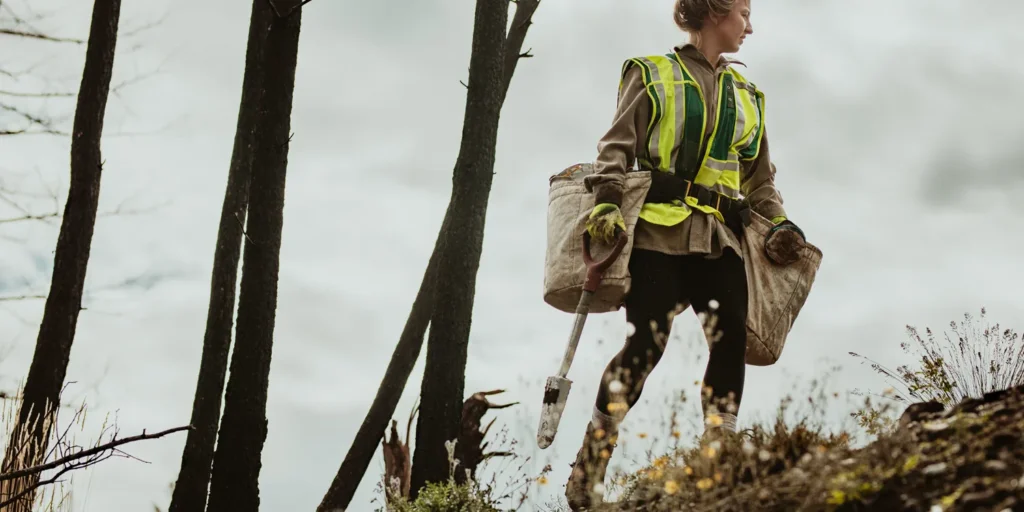Home » A Bold Proposal: Tools for Nature Restoration
A Bold Proposal: Tools for Nature Restoration

Intense wildfires pose significant challenges for forest recovery, prompting scientists and entrepreneurs to seek innovative restoration strategies. When wildfires devastated Los Angeles last January, Nina Raj, founder of the Altadena Seed Library, emphasized the vital role of seeds in restoring damaged ecosystems. Seeds symbolize hope and are essential for rejuvenating the woodlands and wildlife habitats lost to fires.
Historically, forests have adapted to occasional fires and disturbances. However, climate change is leading to unprecedented fire intensity, particularly in boreal regions where recovery is becoming increasingly difficult. As noted by researchers, severe fires can burn deep into the soil, making it impossible for nearby trees to repopulate the area with seeds. This situation necessitates human intervention to restore ecosystems unable to heal naturally.
Complicating these efforts is a global seed shortage exacerbated by climate change, inadequate investment, and unreliable seed collection. The United Nations aims to increase global forest area by 3% by 2030, but many countries struggle to meet this target.
To effectively restore habitats, new practices are being developed. One approach is "assisted migration," which involves relocating seeds or genetic materials to more hospitable environments. This strategy stems from observations that species naturally migrate in response to changing climates. By proactively aiding this process, researchers hope to enhance species survival rates. Although controversial due to the risks of introducing invasive species, advancements in technology, such as AI and ecosystem modeling, can mitigate these dangers.
British Columbia represents a proactive example by planting 275 million seedlings annually. Researchers have initiated trials over the past 16 years to understand which tree species will better adapt to future climates. However, the slow growth rates of trees mean that conclusive results may take a decade or more.
Large-scale ecological reforestation relies on the careful sourcing of seed stocks to ensure they are high-quality and regionally appropriate. Canada’s National Tree Seed Centre is focused on preserving samples from every native tree and shrub species. This effort aims to store seeds for future restoration projects and ensure diverse genetic representation.
Moreover, the lack of universal systems for tracking seed origins hinders restoration efforts. Innovations like Seedark's cloud-based shared ledger aim to connect various stakeholders in the seed supply chain, facilitating collaborative efforts in seed collection and storage relevant to specific ecosystems.
While trees are instrumental in combatting climate change, restoration efforts should not solely focus on tree planting. Moola emphasizes the need for biodiversity alongside carbon offset initiatives. Current practices sometimes involve industrial plantations with low biodiversity that may conflict with local communities. In certain circumstances, it may be more beneficial to allow transformed ecosystems, such as grasslands and wetlands, to flourish rather than prioritizing tree planting.
For individuals looking to contribute, proactive seed collection can be beneficial. Initiatives like the Altadena Seed Library and Toronto Seed Library encourage community engagement in seed donation and sharing. Growing native plants and saving their seeds also promotes biodiversity. Supporting organizations like Forests Canada through planting and biodiversity initiatives can further aid in restoration efforts.
In conclusion, urgent action is needed to address the impacts of climate change on ecosystems. While trees remain vital, embracing diverse ecological strategies and engaging communities in restoration practices can make a meaningful difference.
MaRS Discovery District
https://www.marsdd.com/
MaRS is the world's largest urban innovation hub in Toronto that supports startups in the health, cleantech, fintech, and enterprise sectors. When MaRS opened in 2005 this concept of urban innovation was an untested theory. Today, it’s reshaping cities around the world. MaRS has been at the forefront of a wave of change that extends from Melbourne to Amsterdam and runs through San Francisco, London, Medellín, Los Angeles, Paris and New York. These global cities are now striving to create what we have in Toronto: a dense innovation district that co-locates universities, startups, corporates and investors. In this increasingly competitive landscape, scale matters more than ever – the best talent is attracted to the brightest innovation hotspots.


